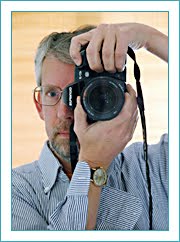It’s been said that so much of our lives is now documented digitally that we rarely have the opportunity any more to stumble across old letters and photographs that take us back in time, but those letters and photographs are still out there. This morning, I was looking in a drawer for a checkbook (another relic of the pre-digital past) and came across some photos of me with high school classmates in Japan during my year as an exchange student (1977-78) and some photographs of me with friends building sandcastles on the beach at Onjuku, in Chiba Prefecture years later (sometime in the mid-1990s). Sadly, I just learned that one of these friends, Yasushi Zenno, died in August. I have yet to learn what happened.
I found my BOAC Junior Jet Club log book. My father worked for BOAC, at first on the New York sales desk. Harper Lee of ‘To Kill a Mockingbird” fame was a colleague. Later, he was assigned to various other cities working for BOAC and later British Airways. On two summers my brother and I were sent off to a boarding school in Taunton, Somerset, in England, while my parents traveled in France. I see from the log that we flew New York to London on June 10, 1966 and made the return flight on July 2, 1966. The book shows we flew out on a BOAC Boeing 707 with Rolls Royce engines (BOAC 707s with this engine configuration were designated 707-436s), registration number G-APFP and made the return flight on a Vickers Super VC-10, registration number G-ASGA. The flight time is given as six hours 30 minutes both ways.
I also came across my BOAC vaccination certificate showing that I’d had my smallpox shots, which were required for overseas travel. Folded inside were a number of other sheets, one from the children’s clinic at New York Hospital showing that I had three doses of the Sabin polio vaccine, which was new at the time. Another sheet has notes in my mother’s hand indicating that I had the measles in 1962, the German measles in 1963, the Mumps in April 1966, and then chicken pox in May, 1967. These are all diseases my son, born in the late 1990s, never had to endure – because of vaccines.
The following year, 1967, we flew New York to London on August 4 and returned on September 3. In 1967, we flew out on a Super VC-10, registration number G-ASGH, with a flight time of six hours 15 minutes and returned on a Boeing 707-436, registration number G-ARRC, with a flight time of seven hours 20 minutes. Each entry is signed by the captain. Somewhere, I still have my Junior Jet Club flight wings. These and the book – and the Junior Jet Club program for kids itself – are reminders of a time when flying was special.

%20Borderless%20M.jpg)





























%20Borderless%20M.jpg)






















